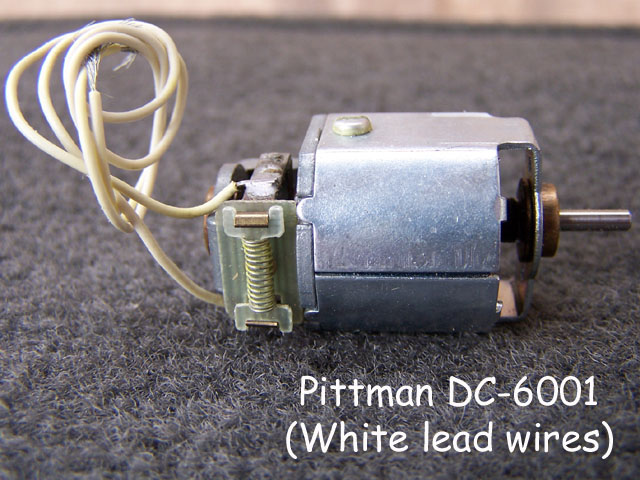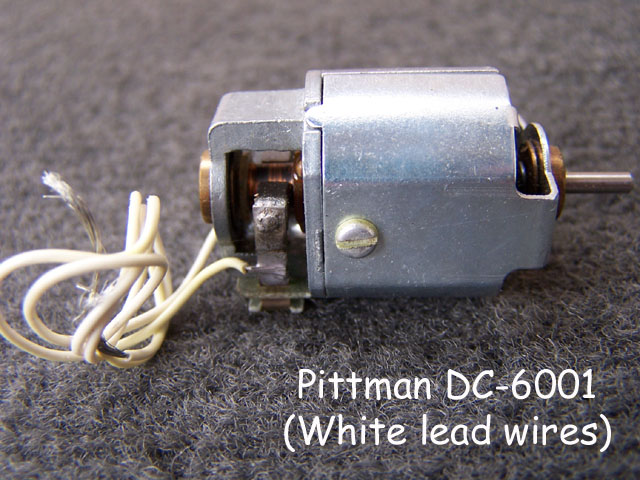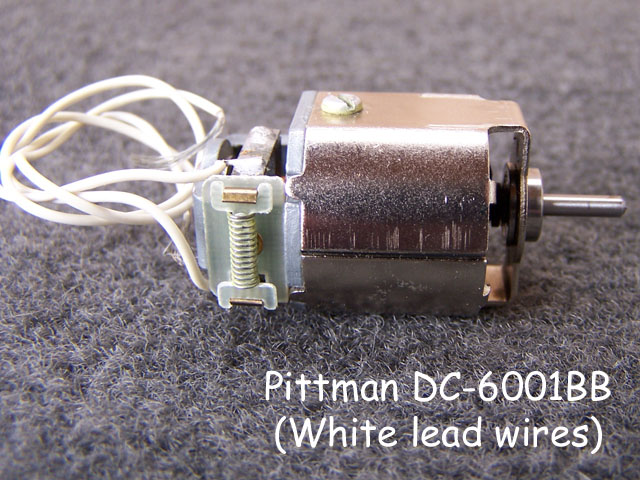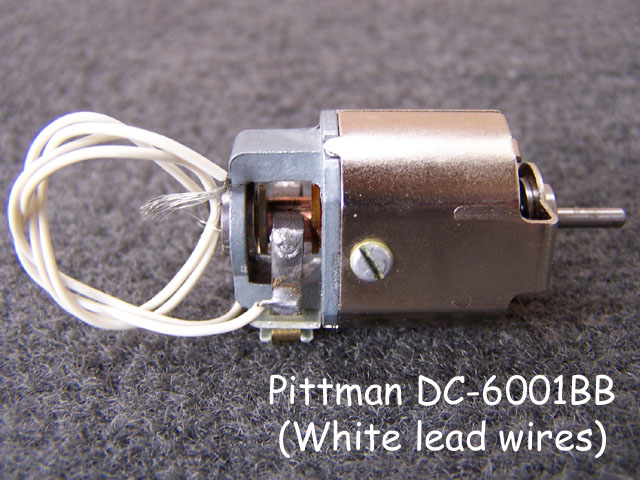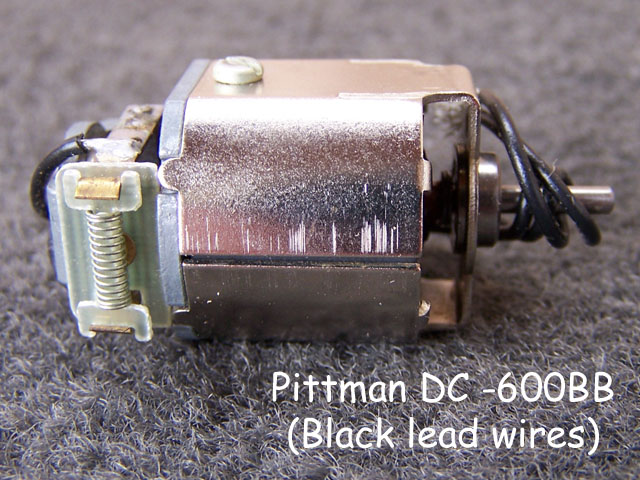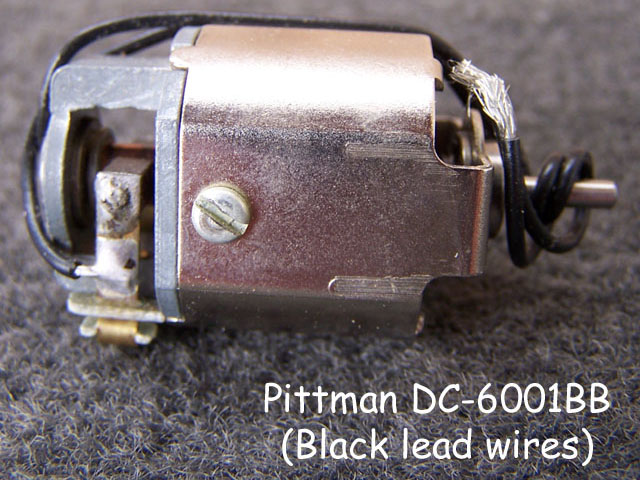Pittman DC-6001 and 6001BB
Motor photos courtesy Bob Steere from his collection
Additional information and photography courtesy Don Siegel and Howie Ursaner
By late 1965 Pittman recognized, despite their past dominance and best efforts in laminated field and open frame motors that the design paradigm had shifted and it was now clear that can type motors were going to be the way to go in competitive slot car racing.
Whether as a revolutionary leap forward, or in a desperate attempt to remain competitive in the slot car motor marketplace, Pittman developed and introduced the model 6001 in April 1966.
There were two versions; one with Oilite bushings (6001) and one with ball bearings (6001BB).
Both versions of the 6001 had a cast metal endbell and large brushes in an overhead spring-loaded lever arrangement which was typical for Pittman. This arrangement was excellent for dissipating most of the heat the motor generated, and reliably withstanding what remained. For its day, it was essentially heat-proof.
The 6001 was also a can drive motor in an era when nearly every other can type motor was endbell drive. While it is doubtful that Pittman engineers knew this in 1966, can drive is inherently superior to endbell drive and has been the dominant can motor configuration since late 1969.
Like all other Pittman motors, the model 6001 was well designed, well built and highly reliable, even when subjected to the extreme overloads common in competitive slot car racing.
Unfortunately, as with most other Pittman products, it was a bit bigger, a bit heavier and a bit slower than the motors it was intended to compete with. The 6001 was a great deal more like the larger Mabuchi 36D than the smaller 16D, and by mid 1966 it was the smaller 16D that was already well on its way to becoming the standard size for pro racing.
Howie Ursaner writes: The Pittman can was close but was too heavy.
It is interesting to note that the DC-6001 is sometimes described as being similar in size to the Mabuchi FT-26 and FT-26D, when in fact the DC-6001 predates both motors by a full year.
To make matters worse the 6001, again like the Mabuchi 36D, had a larger (approx. 3/32") diameter armature shaft which restricted the use of pinion gears smaller than about 10 teeth.
The Mabuchi 16D by contrast had a 5/64" (.078") motor shaft which had no problem accommodating 8 or even 7 tooth pinions. In addition, and unlike the 36D, the 6001 had pan-head endbell attaching screws (one on top and one on the bottom) which effectively prevented the average scratch builder from mounting an already tall motor as low as possible in the chassis.
Despite these drawbacks, the DC-6001 did enjoy some competitive success as a slot car racing motor (but not in the "pro" ranks) and was at one point during its relatively short production life even upgraded with a more powerful armature.
Pittman produced all of their motors in batches. In the first batch of 6001s, delivered in April 1966, both the Oilite bushing and ball bearing versions had white lead wires. In the second (or later) batch, delivered in August 1966, both versions had black wires.
Here is the Oilite bushing version with white lead wires:
And with black lead wires. Don writes: “The DC6001 fresh out of the box, with its black lead wires; date on sheet is Aug. 1, 1966”.
Here are examples of the ball bearing version, first with white lead wires:
And then with black:
A simple drawing to give you an idea of the motor's actual size (the squares are 1/8"):
The Pittman specification sheet for the 6001 is unfortunately rather short on electrical specifications. The sheet below top is dated 4/4/66, and is undoubtedly from the first batch. You can see the lead wires in the photo are not black. The spec sheet below bottom is dated 8/1/66, implying a probability that it is from the second (or perhaps even later) batch. Except for the date, these two spec sheets are identical.
Both specification sheets (above) indicate the armature part number is 100-38-6. The "-6" on the end of the part number is presumed to indicate 6 volts. The photo of the box end flap (below) also indicates the DC-6001 and (by association) the 6001BB were wound for 6 volts.
Pittman was however fully aware of the popular trend towards ever lower armature voltage ratings (i.e.: less turns of heavier wire to gain speed and power) and by early 1967 they had begun advertising an "X" version of the 6001 armature, claiming this unbalanced armature would now run at 50,000 RPM. For more information click here.





